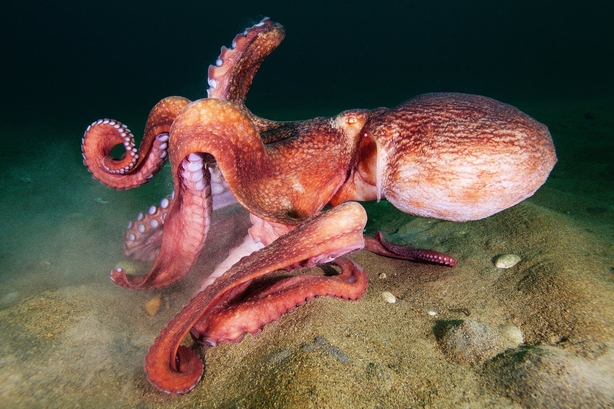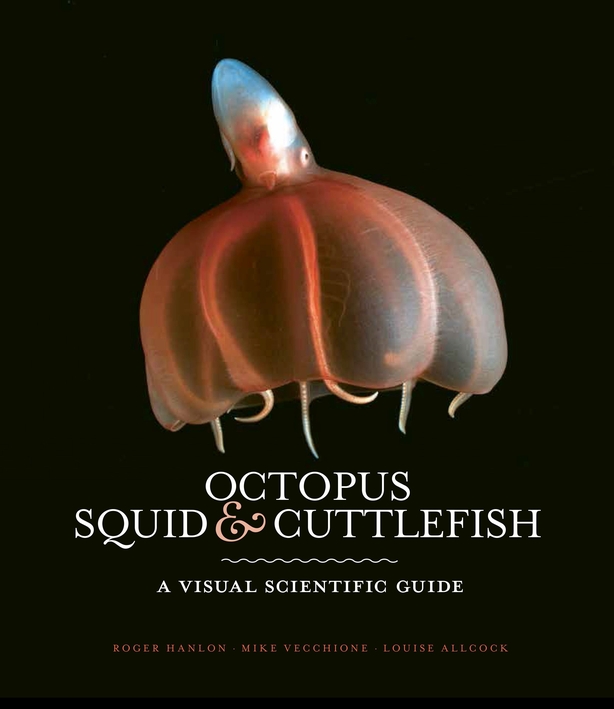Analysis: octopus, squid and cuttlefish are likely to be the source of many future solutions to issues of interest to human society
Octopus, squid and cuttlefish are some of the most intriguing animals on the planet. Their brains are large, their senses keen and their behaviours complex and particularly marked by stunning visual displays. Yet cephalopods, as they are collectively known, are molluscs and evolved from a small limpet-shaped ancestor.
500 million years ago, tiny shelled cephalopods roamed the Cambrian Seas. For much of geological history, all cephalopods were protected by an external shell: in Ireland, intrepid fossil hunters can find the helical forms of nautiloids and ammonites – both early groups of cephalopods - in the Jurassic and Cretaceous rocks of the Antrim coast.
But around 200 million years ago, the cephalopod changed. A rapid period of evolution gave rise to new lineages with internalised shells. These ancestral squids and octopuses were unencumbered by heavy chambered calcium carbonate casings. They were more streamlined, more manoeuvrable, faster, and, for the first time, large swathes of skin were exposed.
We need your consent to load this rte-player contentWe use rte-player to manage extra content that can set cookies on your device and collect data about your activity. Please review their details and accept them to load the content.Manage Preferences
From RTÉ Radio One's Mooney Goes Wild, Louise Allcock talks about how octopus, squid and cuttlefish are a trio with the most complex brains among invertebrates
This skin has become the hallmark of modern cephalopods. It has evolved to contain millions of pigmented chromatophore organs – each containing a sac of yellow, red or brown pigment granules – and iridescent cells, containing a unique protein called reflectin, of all colours. The colour can change in a flash, to provide camouflage or to communicate. The blue-ringed octopus – one of the world’s most venomous marine creatures – can express its blue rings gently to provide camouflage on a coloured coral reef or can flash them brightly in warning when threatened.
The speed of colour change reflects another unique feature of cephalopods: their complex nervous system. Octopuses have half a billion neurons, which is nearly as many as a cat. Two thirds of these are distributed throughout the body, enervating chromatophores, touch receptors, and chemosensory organs on their suckers which allow them to literally "taste" other objects. They can detect light with their skin, which probably allows them to match their brightness to their surroundings better when camouflaging themselves. Bizarrely, for all their beautiful displays, nearly all cephalopods appear to be colour blind, perhaps obtaining just a hint of colour vision thanks to strangely shaped pupils which allow light in from many angles causing different wavelengths of light to focus on different parts of the retina.
The more we study these fascinating creatures, the more inspiring they become.
Cephalopods that live in deeper waters, where light is scarce or absent, have other adaptations than colour. Many have photophores, which are small light producing organs. These organs may be simple groups of cells that produce light through biochemical reactions, or they may be more complex organs with reflectors, filters and lenses, to control the colour, brightness and direction of the light.
This not only allows the photophores to be used in signalling, but also allows the squid to match the colour and intensity of the light they produce to that of radiating moonlight such that the photophores break up and disguise the cephalopod’s silhouette to a predator looking up at them from below. The photophores of the jewel squid are particularly well developed and cover its entire body. This unusual cephalopod has other adaptations to dimly lit waters. Its eyes are asymmetric. The right eye (seen below) is fairly normal and looks slightly downward, but the left eye is huge and tubular and looks upwards, probably helping the squid to see prey or predators, themselves silhouetted against penetrating sunlight or moonlight.

But while the internalisation of the shell allowed the evolution of skin organs, it also brought other problems to solve. The large chambered shell, still seen in modern day nautiluses, was partly gas filled, and provided buoyancy. How to float without it? Some squids simply keep swimming to overcome gravity. Many deep-water squids, including the jewel squid, replace the sodium ions in their tissues with ammonia. The resulting solution of ammonium chloride is lighter than seawater, making the animals positively buoyant. Cuttlefishes have a chambered internal shell, and solve buoyancy in a similar fashion to ancient cephalopods. However, the chambers implode below a certain depth, limiting cuttlefishes to shallow coastal seas.
Benthic octopuses, such as the blue-ringed octopus and the giant Pacific octopus, don’t bother with buoyancy. Their shell is reduced to two tiny rods, and their heavier-than-water tissues confine them to a life on the sea floor, or on a reef, where they use their eight suckered, independently flexible arms to crawl over and explore their habitat, foraging on crustaceans and other animals. The large brains of benthic octopuses help them build a spatial pattern of their habitat, such that they can forage for several hours over a relatively large area, and then swim on a beeline back to their den.

Females of one unusual group of octopuses have evolved true swim bladders.The males of this group are dwarf and can solve their own buoyancy problems by floating inside barrel-shaped gelatinous zooplankton. Other groups of pelagic octopuses use Dumbo-like fins to swim, and balloon their web out like a parachute to slow their subsequent descent.
This phenomenal diversity of forms has inspired numerous technological advances. Scientists have developed materials based on the cephalopod protein reflectin. These materials dynamically change colour, matching their environment and are considered the forerunners of invisibility cloaks. Engineers have developed flexible robots for minimally invasive surgery based on the unique movement of the arms of benthic octopuses. A new generation of robotic attachment devices, mimicking the mechanics of cephalopod suckers, are being developed. These attach successfully to multiple surfaces, whether wet, smooth or rough.

In this age of biotechnology, octopus, squid and cuttlefish are likely to be the source of many future solutions to issues of interest to human society. They are totally unlike any other animal group and the more we study these fascinating creatures, the more inspiring they become.
The views expressed here are those of the author and do not represent or reflect the views of RTÉ



